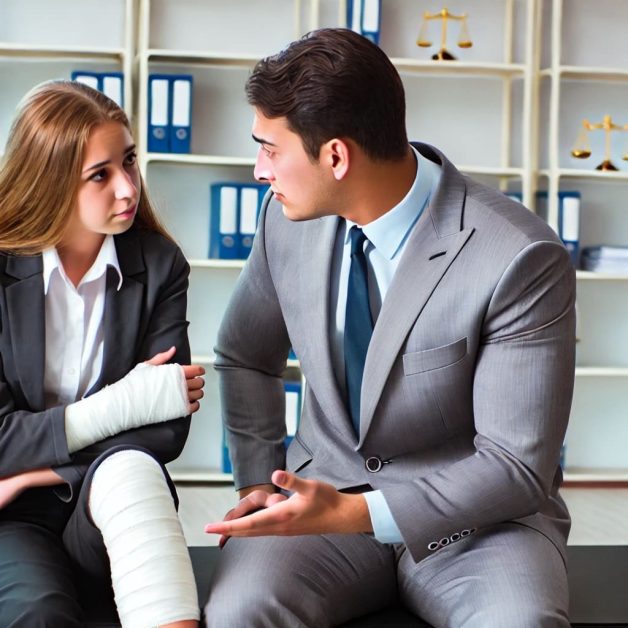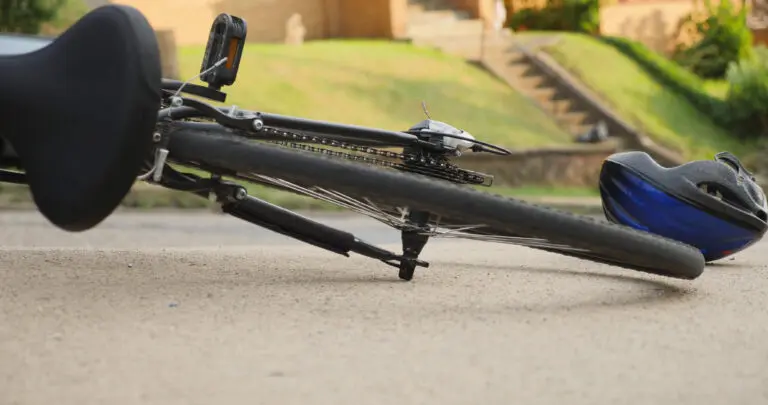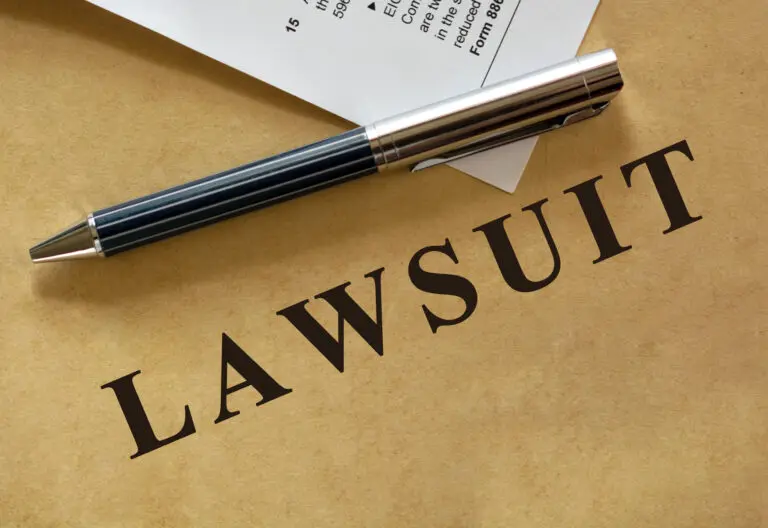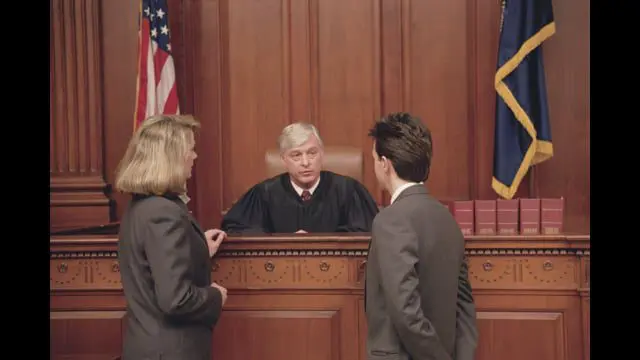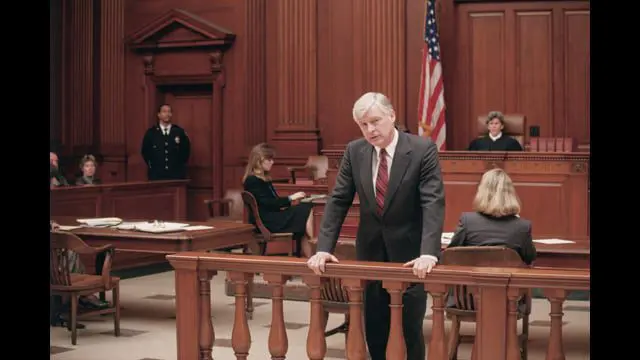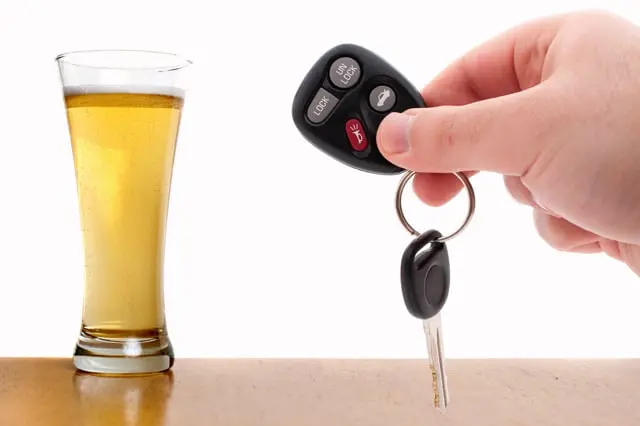When you’ve experienced a slip and fall accident, the aftermath can be physically, emotionally, and financially overwhelming. Understanding the timeframe for resolving such a case is crucial for victims seeking justice and compensation. Working with a slip and fall lawyer can significantly impact the outcome and duration of your lawsuit. This article delves into the typical timeline for resolving a slip and fall lawsuit, the factors that influence this timeline, and other legal aspects pertinent to these cases.
Initial Consultation and Case Evaluation
The first step in any slip and fall lawsuit is the initial consultation with a slip and fall lawyer. During this meeting, the lawyer will evaluate the details of your case to determine its viability. They will assess the evidence, such as photographs of the accident scene, medical records, and witness statements. This initial phase is crucial as it lays the foundation for the entire case. Typically, this consultation and evaluation process can take anywhere from a few days to a couple of weeks, depending on the complexity of the case and the availability of evidence.
Investigation and Evidence Gathering
Once the lawyer takes on your case, a thorough investigation ensues. This involves gathering additional evidence, consulting with experts, and possibly reconstructing the accident scene. Evidence such as surveillance footage, maintenance records, and expert testimonies are critical in establishing liability. This phase can be time-consuming, often taking several weeks to months. The duration largely depends on the availability of evidence and the cooperation of third parties, such as property owners or witnesses.
Filing the Lawsuit
After gathering sufficient evidence, your lawyer will file the lawsuit in the appropriate court. This involves drafting and submitting a complaint that outlines the details of the accident, the injuries sustained, and the compensation sought. The filing process itself is relatively quick, usually taking a few days. However, serving the defendant (the party being sued) can introduce delays, especially if they are difficult to locate or are uncooperative. On average, this step can take a few weeks.
Fase de descubrimiento
The discovery phase is a critical part of the lawsuit where both parties exchange information related to the case. This phase includes depositions, interrogatories, and requests for documents. During depositions, witnesses and parties involved are questioned under oath. Interrogatories are written questions that the other party must answer, while document requests involve obtaining relevant records. The discovery phase can be lengthy, often taking several months to a year, depending on the complexity of the case and the level of cooperation from both parties.
Peticiones previas al juicio y negociaciones de conciliación
Before a case goes to trial, there are often pre-trial motions and settlement negotiations. Pre-trial motions can include requests to dismiss certain evidence or even the entire case. These motions can take a few weeks to several months to resolve. Simultaneously, settlement negotiations may occur. Many slip and fall cases are settled out of court to avoid the time and expense of a trial. Settlement negotiations can be quick, taking a few weeks, or they can drag on for several months if both parties cannot agree on the compensation amount.
Preparación del juicio
If the case does not settle, it proceeds to trial. Trial preparation involves finalizing evidence, preparing witnesses, and developing a trial strategy. This phase can be intense and time-consuming, often taking several weeks to a few months. The duration of trial preparation depends on the complexity of the case and the lawyer’s schedule.
Ensayo
The trial itself can vary significantly in length. Some slip and fall trials may last only a few days, while others can extend for several weeks. During the trial, both parties present their evidence and arguments, and a judge or jury decides the outcome. The trial length depends on the number of witnesses, the complexity of the evidence, and the court’s schedule.
Mociones y recursos posteriores al juicio
After the trial, there may be post-trial motions, such as motions for a new trial or to alter the judgment. These motions can take a few weeks to resolve. Additionally, either party may choose to appeal the court’s decision, which can significantly extend the case’s duration. The appeals process can take several months to years, depending on the court’s schedule and the complexity of the legal issues involved.
Factors Influencing the Timeline
Several factors can influence the timeline for resolving a slip and fall lawsuit:
- Complexity of the Case: More complex cases with multiple parties or disputed facts can take longer to resolve.
- Availability of Evidence: Easily obtainable evidence can expedite the process, while hard-to-find or disputed evidence can cause delays.
- Court Schedules: The court’s schedule and backlog of cases can impact the timing of hearings and trial dates.
- Settlement Willingness: If both parties are willing to settle, the case can be resolved much faster than if it goes to trial.
- Representación jurídica: Experienced lawyers can navigate the legal process more efficiently, potentially shortening the case’s duration.
Legal Aspects to Consider
Understanding the broader legal context of slip and fall lawsuits can provide additional insights and help manage expectations regarding the timeline and outcome of your case.
Liability and Negligence
One of the key legal aspects in slip and fall cases is establishing liability and proving negligence. To hold the property owner or responsible party liable, you must demonstrate that they were negligent in maintaining the premises. This involves showing that the hazardous condition was known or should have been known by the property owner and that they failed to address it adequately.
Comparative Negligence
In some jurisdictions, the concept of comparative negligence may apply. This means that if the injured party is found to be partially at fault for the accident, their compensation may be reduced proportionally. Understanding how comparative negligence laws apply in your state is crucial for setting realistic expectations about the potential compensation.
Statute of Limitations
Each state has a statute of limitations that sets a deadline for filing a slip and fall lawsuit. Failing to file within this timeframe can result in losing the right to pursue compensation. It’s essential to be aware of the statute of limitations in your state and to act promptly to preserve your legal rights.
Damages and Compensation
The compensation sought in a slip and fall lawsuit can include medical expenses, lost wages, pain and suffering, and more. Understanding the types of damages available and how they are calculated can help you and your lawyer build a stronger case. Additionally, knowing the average settlement amounts for similar cases in your area can provide a benchmark for your expectations.
Role of Expert Witnesses
Expert witnesses can play a crucial role in slip and fall cases. They can provide testimony on various aspects, such as the hazardous condition, the standard of care expected from the property owner, and the extent of the injuries sustained. Engaging credible experts can strengthen your case and potentially expedite the resolution.
Insurance Involvement
In many slip and fall cases, insurance companies are involved, either through the property owner’s liability insurance or the injured party’s health insurance. Dealing with insurance companies can add complexity and time to the case. It’s essential to understand the insurance coverage available and how it impacts the potential settlement.
Insurance Claims Process
Navegar por la insurance claims process is a significant aspect of slip and fall cases. After the accident, the injured party usually files a claim with the property owner’s insurance company. The insurer will investigate the claim, which may involve reviewing the accident scene, interviewing witnesses, and examining medical records. This investigation process can take several weeks to months. The insurer’s goal is often to minimize the payout, so having a slip and fall lawyer advocate on your behalf is crucial.
Casos prácticos detallados
Examining detailed case studies of slip and fall lawsuits can provide valuable insights into the legal process and potential outcomes. For instance, a case study might involve a plaintiff who slipped on an icy sidewalk outside a retail store. The case study would detail the steps taken by the plaintiff’s lawyer, the evidence gathered, the negotiations with the store’s insurance company, and the eventual settlement or court decision. These case studies can highlight different scenarios and timelines, offering a realistic perspective on what to expect.
State-Specific Laws
Slip and fall laws can vary significantly from state to state. For example, some states follow pure comparative negligence rules, while others follow modified comparative negligence rules. In pure comparative negligence states, the injured party can recover damages even if they are 99% at fault, although their compensation will be reduced by their percentage of fault. In modified comparative negligence states, the injured party can only recover damages if they are less than 50% or 51% at fault. Understanding these state-specific laws is crucial for accurately assessing your case’s potential outcome.
Impact on Property Owners
Slip and fall lawsuits can have significant implications for property owners. If found negligent, property owners may face substantial financial liabilities, increased insurance premiums, and potential damage to their reputation. It’s essential for property owners to understand their legal responsibilities and take proactive measures to maintain safe premises. Regular inspections, prompt repairs of hazardous conditions, and clear documentation of maintenance activities can help mitigate the risk of slip and fall accidents and subsequent lawsuits.
Economic Impact of Injuries
The economic impact of slip and fall injuries extends beyond immediate medical expenses. Victims may face long-term rehabilitation costs, lost wages due to inability to work, and reduced earning capacity if their injuries result in permanent disabilities. Additionally, the emotional and psychological toll of the accident can affect the victim’s quality of life and relationships. Understanding these economic impacts can help build a comprehensive case for compensation.
Role of Medical Evidence
Medical evidence plays a pivotal role in slip and fall cases. Detailed medical records, including initial emergency room visits, follow-up appointments, and treatment plans, are essential for demonstrating the extent of the injuries. Expert testimony from medical professionals can further substantiate the injury claims and help establish a causal link between the accident and the injuries. Accurate and thorough medical documentation can significantly strengthen the case and support the compensation claim.
Comparative Negligence
Comparative negligence laws can greatly impact the outcome of slip and fall lawsuits. These laws determine how liability is distributed when multiple parties are at fault. In some cases, the injured party may be partially responsible for their accident. For example, if a person was texting while walking and slipped on a wet floor, their compensation might be reduced by their percentage of fault. Understanding how comparative negligence is applied in your state is critical for setting realistic expectations and developing a strategic legal approach.
Alternative Dispute Resolution
Alternative dispute resolution (ADR) methods, such as mediation and arbitration, can offer viable alternatives to going to trial. Mediation involves a neutral third party who facilitates negotiations between the disputing parties to reach a mutually acceptable resolution. Arbitration, on the other hand, involves a neutral arbitrator who hears both sides and makes a binding decision. ADR can be faster and less costly than a trial, making it an attractive option for resolving slip and fall cases. However, it’s essential to weigh the pros and cons of ADR and consult with your slip and fall lawyer to determine the best approach for your case.
Long-term Effects of Injuries
Slip and fall injuries can have long-term effects that significantly impact the victim’s life. Chronic pain, mobility issues, and permanent disabilities are common long-term consequences. These injuries can affect the victim’s ability to work, engage in daily activities, and enjoy life. Addressing these long-term effects in the lawsuit is crucial for securing adequate compensation. This includes considering future medical expenses, rehabilitation costs, and compensation for pain and suffering.
Recent Legal Precedents
Staying informed about recent legal precedents and court rulings in slip and fall cases can provide valuable insights and influence the strategy for your case. For example, a recent court ruling might clarify the standards for proving negligence or set new precedents for calculating damages. Understanding these legal developments can help you and your lawyer navigate the complexities of the legal system and build a stronger case.
Practical Tips for Victims
For individuals who have experienced a slip and fall accident, taking proactive steps can significantly impact the outcome of their case:
Document the Incident
Immediately after the accident, document the incident thoroughly. Take photographs of the accident scene, any hazardous conditions, and your injuries. Obtain contact information from witnesses and report the incident to the property owner or manager.
Seek Medical Attention
Promptly seek medical attention for your injuries. Even if your injuries appear minor, getting a medical evaluation is essential. Medical records serve as crucial evidence in your case and help establish the extent of your injuries.
Consult a Slip and Fall Lawyer
Consulting a slip and fall lawyer as soon as possible is critical. They can guide you through the legal process, help gather evidence, and ensure your rights are protected. An experienced lawyer can also provide a realistic assessment of your case and its potential timeline.
Avoid Discussing the Case Publicly
Refrain from discussing the details of your case publicly, including on social media. Statements made publicly can be used against you in court. It’s best to keep communications about your case limited to your lawyer and trusted individuals.
Conclusión
Slip and fall lawsuits can be complex and time-consuming, but understanding the typical timeline and legal aspects involved can help manage expectations and navigate the process more effectively. By working with an experienced slip and fall lawyer, gathering comprehensive evidence, and staying informed about legal developments, victims can improve their chances of achieving a favorable outcome. Remember to take proactive steps, seek professional legal assistance, and be patient as the case progresses.
Attorneys.Media Video Document References
- Is Personal Injury Part of Your Law Practice?
- As an Attorney, How Are You Generating Content for Your Online Presence?
- How Can You Help Potential New Clients Get Their Questions Answered?
- How Do You Differentiate Yourself When Someone Looks Online for Help?
- How Do You Differentiate Yourself as a Criminal Defense Attorney?
- Have You Been Thinking About Video Marketing for Your Law Firm?
- Should Attorneys Use Video Marketing to Attract New Clients?
- What Do Potential Clients See When They Research Your Name Online?
- Cómo puede ayudarle Attorneys.Media

